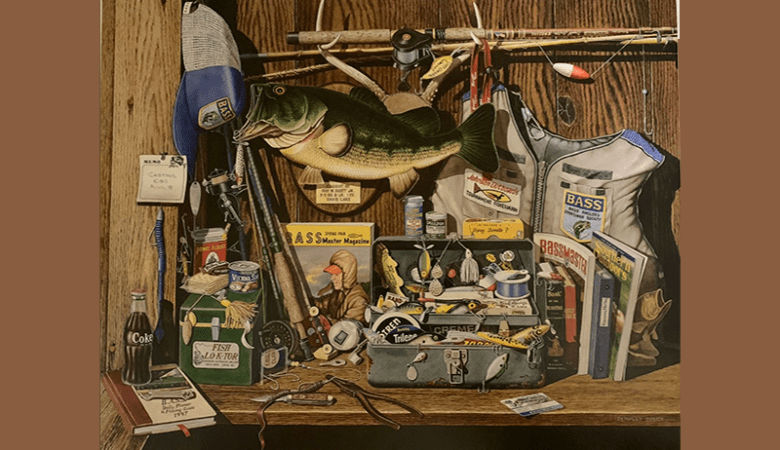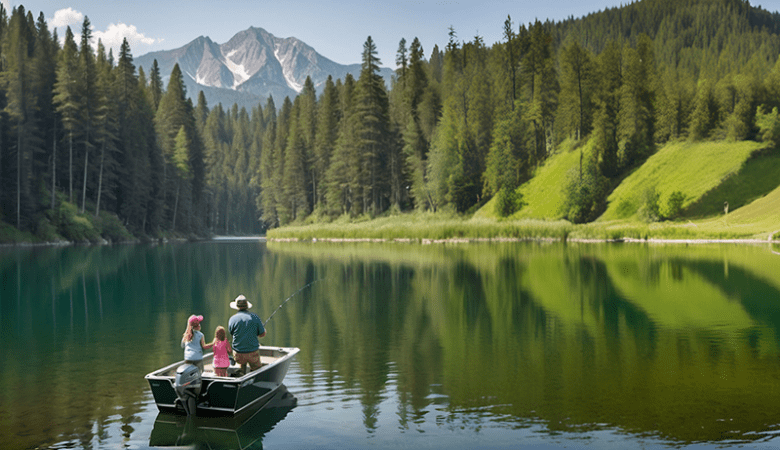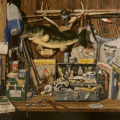
Catch and release fishing is all about capturing fish and then letting them go back into the water alive. This practice helps conserve fish populations and keeps fishing sustainable. But it’s more than that; it’s a way to keep the balance in our ecosystems while still enjoying the sport.
The idea of catch and release isn’t new. It actually dates back to the early 1900s when anglers started realizing that overfishing could drastically reduce fish numbers. Over time, this concept grew, and now it’s a standard practice among sport fishers worldwide. Back then, it was revolutionary; anglers saw it as a way to protect and preserve the sport they loved.
However Catch and Release became the brainchild of BASS founder Ray Scott. The Bass Anglers Sportsman Society was a budding organization the would bring the world of competitive bass fishing to the mainstream through it’s tournament trail, membership and glossy magazines teaching fishing techniques, conservation and creating heroes of the sport of bass fishing. With increasing fishing pressure and environmental changes, maintaining healthy fish populations was and still is more important than ever. It’s about being part of a broader effort to ensure that future generations can enjoy fishing too. B.A.S.S. was at the forefront of effecting change at local, state and national levels.
At its core, catch and release is rooted in respect for the environment. Anglers who practice it understand the delicate balance of aquatic ecosystems and their role in maintaining it. They see themselves as stewards of the waters, responsible for both enjoying and preserving them.
The Environmental Impact of Catch and Release
Catch and release fishing positively influences the environment by helping to maintain fish populations and overall ecosystem health. When done correctly, most fish survive the process, ensuring they can continue to breed and contribute to their populations. It becomes a critical tool for sustaining fish diversity and abundance in areas under pressure from angling.
Maintaining biodiversity is another significant benefit. By releasing fish back into their natural habitats, anglers help preserve the genetic diversity of species. This diversity is vital for the resilience of fish populations, enabling them to adapt to environmental changes and various threats. It’s about ensuring that the fish you release today can thrive in tomorrow’s waters.
Scientific studies back up the benefits of catch and release. Research indicates that survival rates can be very high if proper techniques are used. Factors like water temperature, fish handling, and hook type all play a role. Studies show that fish caught and released with minimal handling and appropriate gear often have the best chance of survival. It highlights the importance of being informed about the best practices to follow.
However, catch and release isn’t without its challenges. Fish can still experience stress and injury during the process. Mismanagement can lead to higher mortality rates, negating the conservation benefits. This underscores the necessity for anglers to stay educated and adapt their methods based on emerging scientific knowledge.
Despite these challenges, the overall environmental benefits make catch and release a valuable practice. With appropriate care and consideration, it can significantly contribute to the health of aquatic ecosystems. It’s about balancing human recreation with ecological responsibility to preserve our fisheries for the future.
Tournament Fishing and its Effects on Fisheries
Competitive fishing tournaments are a major part of the angling world, drawing large crowds and big money. These events add excitement and camaraderie to the sport but also bring unique challenges to fisheries.
One significant concern with tournament fishing is the increased stress on fish populations. During these events, anglers often target large numbers of fish in a short period. This can lead to overfishing in specific areas, putting strain on the local populations. Fish caught during tournaments may also experience higher stress levels due to repeated handling and transportation to weigh-in stations.
Tournament organizers and participants are aware of these issues and have implemented various strategies to mitigate negative impacts. Many tournaments now enforce strict catch and release rules, with penalties for dead fish. Innovations like live release boats and improved weigh-in procedures help enhance fish survival rates. Technology also plays a role, with tools designed to minimize handling time and stress on the fish.
Scientific studies on tournament fishing provide valuable insights. These studies often look at the physiological stress responses in fish and their post-release survival rates. While some studies indicate that fish can recover well if handled properly, others point out the need for ongoing improvements in practices. Research helps guide better tournament regulations and angler practices, ensuring the sport’s sustainability.
Tournament fishing has also led to community-wide awareness about conservation. Competitive anglers often participate in and promote conservation initiatives. By showcasing best practices, they can influence a broader audience, spreading the message of responsible fishing.
Conservation Efforts by Anglers
Anglers aren’t just passionate about fishing; they’re also deeply committed to conservation. Across the globe, individual anglers and fishing communities have taken action to protect and restore aquatic environments.
Grassroots movements are at the heart of these conservation efforts. Many local angling clubs and organizations spearhead projects aimed at habitat restoration, water quality improvement, and species protection. These grassroots initiatives often start small but can grow to have a significant impact on local ecosystems.
Collaboration between anglers and conservation organizations is another important aspect. Partnerships with groups like Trout Unlimited, the Coastal Conservation Association, and other environmental nonprofits bring additional resources, expertise, and visibility to conservation projects. These collaborations help amplify the efforts of individual anglers and ensure that their projects are scientifically sound and impactful.
Innovative techniques and technology also play a role in conservation. Anglers have developed and adopted various tools and methods to minimize their environmental footprint. From biodegradable fishing gear to apps that track fish populations and water conditions, technology enhances anglers’ ability to fish responsibly and contribute to scientific knowledge.
There are many success stories where angler-led initiatives have made a tangible difference. Projects like river clean-ups, habitat restoration, and youth education programs are just a few examples. These initiatives not only improve local environments but also foster a sense of stewardship and community among anglers.
In the end, conservation efforts by anglers highlight their commitment to preserving the natural world. By taking action at the grassroots level and collaborating with larger organizations, anglers play a crucial role in maintaining healthy fisheries and aquatic ecosystems for future generations.
Best Practices for Catch and Release
Practicing catch and release effectively requires a blend of the right knowledge, techniques, and equipment. A few core principles can significantly boost a fish’s chance of survival after release.
Using the right gear is the first step. Barbless hooks make it easier to release fish and cause less injury. A good landing net made of rubber or knotless mesh can minimize damage to the fish’s scales and skin. Pliers and hook removers are also essential for quick and safe hook removal.
Handling fish with care is crucial. Wet your hands before touching a fish to protect its mucous coating, which helps prevent infections. Avoid squeezing the fish or touching its gills. Support the fish’s body and keep it in the water as much as possible.
Efficient and quick release is key. Limit the fish’s time out of water to minimize stress. If you need to take photos, have your camera ready beforehand to reduce handling time. Revive the fish by holding it in the water, facing into the current, until it swims away on its own.
Education and awareness are also vital components of responsible catch and release. Staying informed about the latest techniques and guidelines can make a big difference. Engaging with the fishing community to share knowledge and experiences helps everyone improve their practices.
By following these best practices, anglers can ensure they are doing their part to sustain fish populations and preserve the aquatic environment. It’s about fishing smart and fishing responsibly, so we can all continue to enjoy the sport for years to come.











Leave a Reply